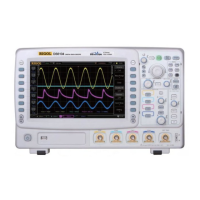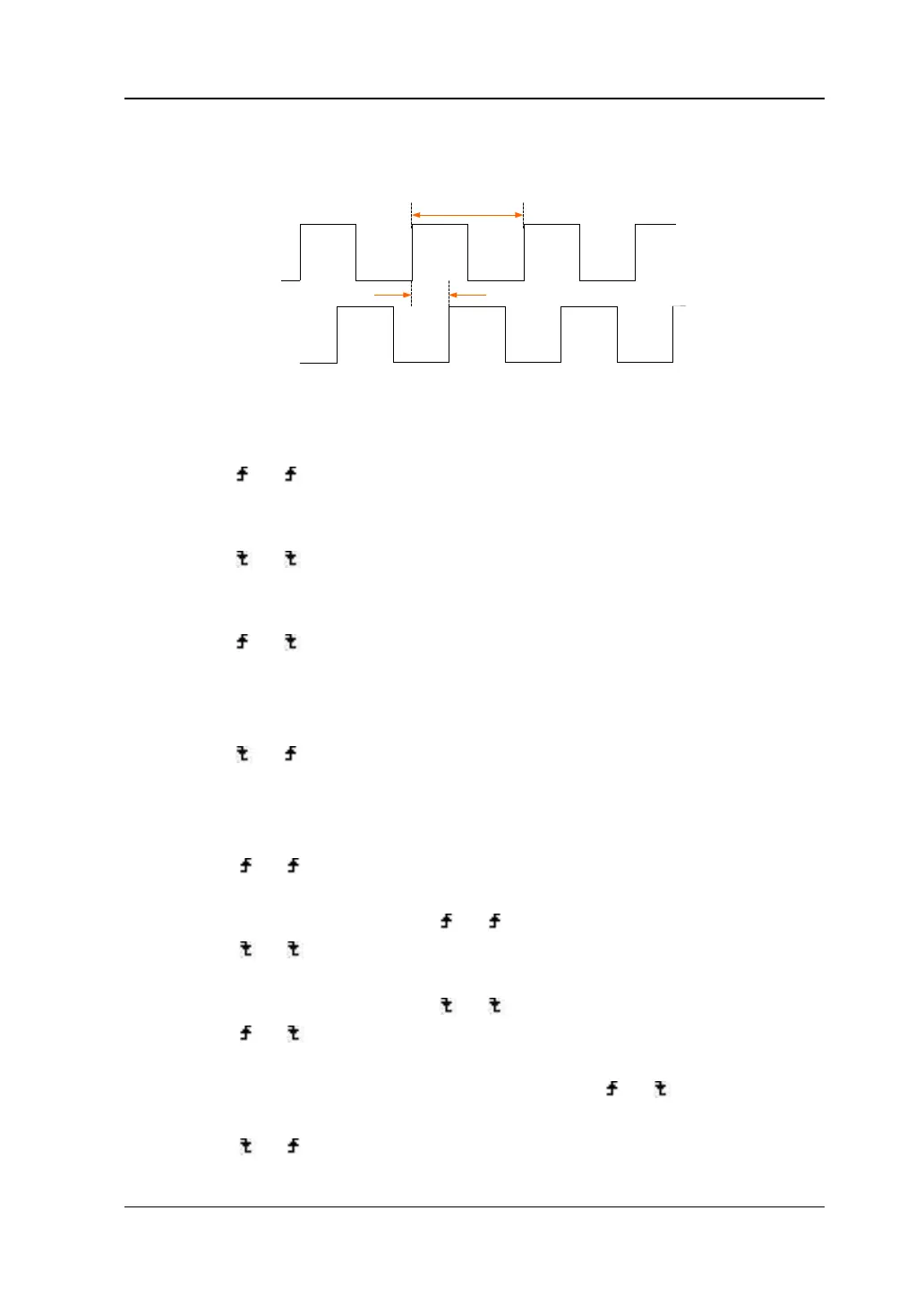6 To Make Measurements RIGOL
DS6000 User’s Guide 6-19
Delay and Phase Parameters
Delay
Source A
Source B
Period
Source A and source B can be any of CH1, CH2, CH3 and CH4.
1. Delay A →B : the time difference between the threshold middle values of
the rising edges of source A and source B. Negative delay indicates that the
rising edge of source A occurred after the rising edge of source B.
2. Delay A
→B : the time difference between the threshold middle values of
the falling edges of source A and source B. Negative delay indicates that the
falling edge of source A occurred after the falling edge of source B.
3. Delay A
→B : the time difference between the threshold middle values of
the rising edge of source A and the falling edge of source B. Negative delay
indicates that the rising edge of source A occurred after the falling edge of
source B.
4. Delay A
→B : the time difference between the threshold middle values of
the falling edge of source A and the rising edge of source B. Negative delay
indicates that the falling edge of source A occurred after the rising edge of
source B.
5. Phase A
→B : the phase difference (expressed in degree) between the
threshold middles values of the rising edges of source A and source B and can be
calculated according to "Delay A
→B " and the period of source A.
6. Phase A
→B : the phase difference (expressed in degree) between the
threshold middle values of the falling edges of source A and source B and can be
calculated according to "Delay A
→B " and the period of source A.
7. Phase A
→B : the phase difference (expressed in degree) between the
threshold middle values the rising edge of source A and the falling edge of
source B and can be calculated according to "Delay A
→B " and the period of
source A.
8. Phase A →B : the phase difference (expressed in degree) between the

